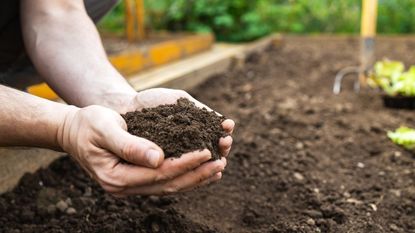What Is Garden Soil – When To Use Garden Soil
Garden soil vs. potting soil is often fodder for debate. It's good to know the differences between the two.


What's In Garden Soil: Garden Soil vs. Other Soils
When it comes to growing plants, garden soil vs. other soils is not a simple topic. There are many types of soil. They vary by content, particle size, nutrients, additives, and purpose. Garden soil is one of many labels you will see at your local garden center among the bags of topsoil and potting soil.
What is Garden Soil?
Any type of soil is a blend of silt clay, sand, and organic matter. Some soil mixes have other materials added, like perlite or sphagnum moss. These other materials are considered soilless.
Garden soil is a mixture of true soil and soilless components. It is meant to be used in beds, mixed into existing soil in gardens, or used in very large containers.
What’s in Garden Soil?
Garden soil includes soil and soilless materials. It is made by mixing some soilless components into topsoil. The type of materials and the ratios vary by product and manufacturer. Some of the soilless components of garden soil can include:
- Compost - Garden soil might contain some decayed organic matter but not nearly as much as in a high-quality potting soil.
- Peat - Peat is decayed organic materials, typically sphagnum moss, from bogs. You might see it listed as peat moss. It breaks up and lightens soil mixes.
- Coir - Coir comes from coconut. It is a fiber that plays a similar role to peat in soil mixes. It is not common in garden soil blends.
- Bark - A cheaper alternative to peat is ground up bark. It increases aeration and drainage but does not retain moisture as well as peat.
- Perlite - Perlite is a mineral that looks like Styrofoam. It is used to lighten soil and improve drainage and aeration.
Garden Soil vs Potting Soil
Garden soil and potting soil are very different and should not be used interchangeably. Potting soil—not to be confused with potting mix, which actually contains no soil—is a mixture of soil with a high organic matter content and soilless components.
Potting soil is much lighter than garden soil. Garden soil can quickly become compacted and heavy, while potting soil remains light and aerated, allowing water to drain through it readily.
Garden Soil vs Topsoil
Topsoil is the least expensive and lowest quality soil you’ll find in the garden center. The composition of topsoil varies a lot by product, but it is generally only used to fill in holes, create berms, level out garden areas, or otherwise change the structure of a yard or garden.
Gardening tips, videos, info and more delivered right to your inbox!
Sign up for the Gardening Know How newsletter today and receive a free download of our most popular eBook "How to Grow Delicious Tomatoes."
This is because it is inexpensive, so you can use a lot of topsoil for these larger products. However, it does not contain adequate nutrients or have good enough drainage or aeration to be used to grow plants unless mixed well with better soils.
How to Use Garden Soil
Consider garden soil the choice that falls between inexpensive, low-quality topsoil and expensive, high-quality potting soil. You wouldn’t use it simply to fill spaces or create structure. You also wouldn’t use garden soil as the sole component in containers.
Use garden soil to mix into large beds if your soil is of poor quality or is heavy. Mix it with potting soil for larger containers. The best soil for raised garden beds is of good quality but not too expensive because you need a lot of it. Garden soil with a little organic matter or potting soil mixed in is a good choice.
Never use garden soil alone for containers. It will compact too quickly, retain too much water, and restrict drainage and aeration. You can mix it with a high quality potting soil or potting mix for containers. Just be aware that garden soil is intended for use in the ground, not containers, so it might contain fungi and other contaminants that could harm houseplants or annuals.

Mary Ellen Ellis has been gardening for over 20 years. With degrees in Chemistry and Biology, Mary Ellen's specialties are flowers, native plants, and herbs.
- Amy DraissDigital Community Manager